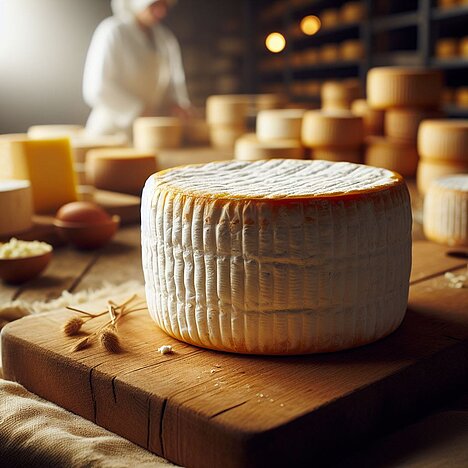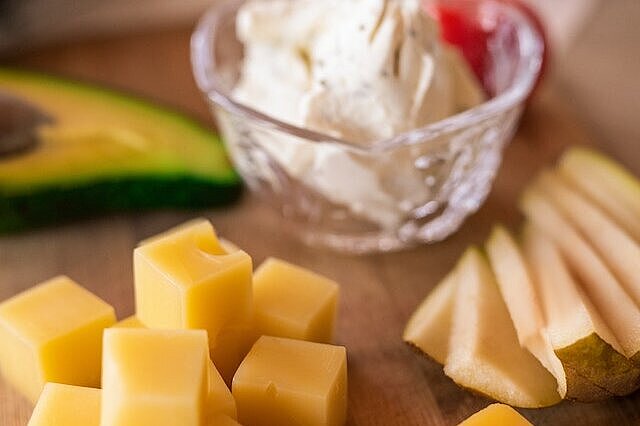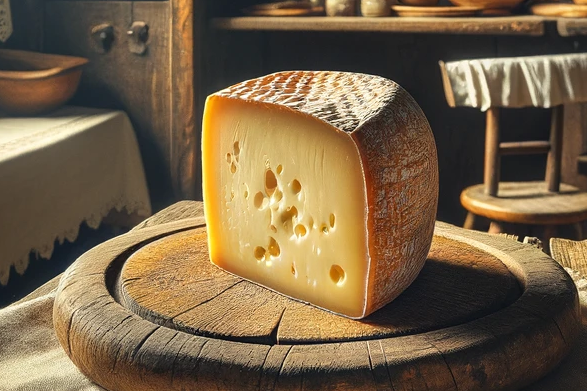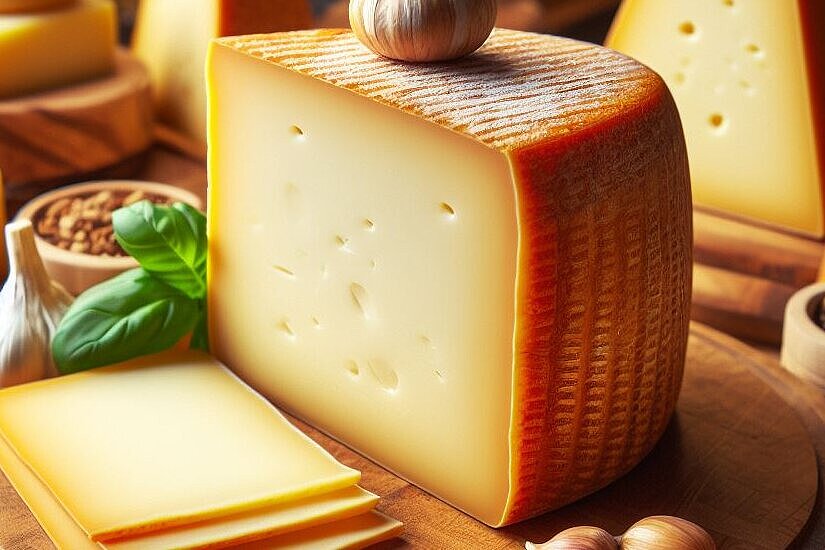Beaufort

What is Beaufort?
Beaufort is a hard cheese made from raw cow's milk. It comes from the east of the department of Savoie and two neighboring municipalities in the department of Haute-Savoie in the French Alps. The area of origin includes the Doron valley, the Tarentaise, the Maurienne and part of the Val d'Arly.
Beaufort has had a protected designation of origin (PDO) since 1996, which means that it can only be produced under certain conditions. The milk must come from cows of the Tarine or Abondance breeds, which have at least 2.5 hectares of pasture per animal. The cows may only be fed with grass, hay or grain from the region of origin. The milk must be processed within 24 hours of milking. The cheese must be matured for at least five months in cool mountain cellars.
There are three varieties of Beaufort:
- Beaufort d'été (summer Beaufort): It is made from the milk that the cows give on the mountain pastures between June and October. It has a fruity and flowery taste.
- Beaufort d'alpage (Alpine Beaufort): It is made from the milk that the cows give on the mountain pastures between May and November. It is produced directly in the mountain huts and has an intense and spicy flavor.
- Beaufort d'hiver (Winter Beaufort): It is made from the milk that the cows give in the valley between November and May. It has a mild and nutty flavor.
A loaf of Beaufort weighs between 20 and 70 kilograms and has a diameter of 35 to 75 centimetres. It has a characteristic concave shape at the edge and a yellow to brown rind. The paste is ivory to pale yellow in color, with a few small holes and occasional cracks. The fat content in the dry matter is at least 48 percent.
What are the benefits of Beaufort for dogs?
Cheese is generally a healthy snack for dogs, as long as it is fed in moderation. Cheese is high in protein, calcium, phosphorus, zinc and vitamins A, B and K. These nutrients are important for your dog's muscles, bones, teeth, skin, coat and immune system. Cheese can also help to increase the pH level in your dog's mouth and thus reduce the formation of plaque.
Beaufort has some specific benefits for dogs:
- It's made from raw milk, which contains more enzymes and beneficial bacteria than pasteurized milk. These can support your dog's digestion and immune system.
- It is rich in omega-3 fatty acids, which have an anti-inflammatory effect and are good for your dog's heart, brain and joints.
- It has a high content of tyrosine, an amino acid that promotes the production of dopamine and noradrenaline. These neurotransmitters are important for your dog's mood, learning and memory.
What are the disadvantages of Beaufort for dogs?
Cheese is not suitable for all dogs. Some dogs cannot tolerate cheese well or have an allergy or intolerance to dairy products. This can lead to symptoms such as diarrhea, vomiting, bloating, itching or skin rashes. When you give your dog cheese for the first time, you should observe him and look out for signs of a negative reaction. If you are unsure whether your dog can eat cheese, you should ask your vet for advice.
Beaufort has some specific disadvantages for dogs:
- It is very high in fat, which can lead to obesity, pancreatitis or other health problems if fed in large quantities. You should not give your dog more than 10 grams of Beaufort per kilogram of body weight per day.
- It is very salty, which can lead to thirst, dehydration or kidney problems if fed in large quantities. You should make sure that your dog always has enough fresh water available.
- It may contain lactose, a milk sugar that some dogs cannot digest well. This can lead to digestive problems or diarrhea. You should make sure that your dog does not get diarrhea when eating Beaufort.
Beaufort is a delicious and nutritious cheese for dogs, made from raw cow's milk in the French Alps. It has a strong and aromatic flavor and a firm and creamy texture. It is high in protein, calcium, phosphorus, zinc and vitamins A, B and K as well as omega-3 fatty acids and tyrosine. These nutrients are good for your dog's muscles, bones, teeth, skin, coat, heart, brain and mood.
However, Beaufort is not suitable for all dogs. Some dogs cannot tolerate cheese well or have an allergy or intolerance to dairy products. This can lead to symptoms such as diarrhea, vomiting, flatulence, itching or skin rashes. Beaufort is also very high in fat and salt, which can lead to obesity, pancreatitis, dehydration or kidney problems if fed in large quantities.
If you want to give your dog Beaufort, you should feed it in moderation and pay attention to its reaction. You should not give your dog more than 10 grams of Beaufort per kilogram of body weight per day and always offer him enough fresh water.
Beaufort is a delicious cheese for you and your dog - as long as you enjoy it with care!
Properties 8
Are you looking for other ingredients with a specific property?
Just click on them to find more.
If you notice any signs of hypersensitivity or poisoning in your dog, you should see your vet immediately. We are not a substitute for a vet, but we try to be as accurate as possible. Every dog reacts differently and we recommend you get a second opinion or consult your vet if in doubt.
Stay healthy and take good care of your four-legged friend!😊
Similar to Beaufort
Appenzeller cheese is a semi-hard cheese (or semi-hard cheese) made from raw milk. It comes from the Appenzell region in north-eastern Switzerland, where it has been produced according to...
Fontina is a traditional cheese from the Aosta Valley, an alpine region in north-western Italy. Since the 18th century, it has been made according to a fixed recipe from the whole raw milk of cows...
Cheddar is a hard cheese that is made by heating and pressing milk. The whey is separated and the cheese mass is pressed into molds. The cheese then matures for several months to years, depending on...
Gruyère is a hard cheese made from raw cow's milk. It comes from the canton of Fribourg in Switzerland and is named after the town of Gruyères. It has had a protected designation of origin (PDO)...



